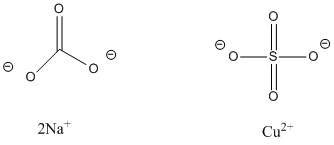
Burgundy mixture
Encyclopedia

Sodium carbonate
Sodium carbonate , Na2CO3 is a sodium salt of carbonic acid. It most commonly occurs as a crystalline heptahydrate, which readily effloresces to form a white powder, the monohydrate. Sodium carbonate is domestically well-known for its everyday use as a water softener. It can be extracted from the...
. This mixture, which can have an overall copper concentration within the range of 1% through 20% , is used as a fungicidal spray for trees and small fruits.
History
Similar to the Bordeaux MixtureBordeaux mixture
Bordeaux mixture is a mixture of copper sulfate and slaked lime used as a fungicide in vineyards. It is used mainly to control garden, vineyard, nursery and farm infestations of fungi, primarily downy mildew which can result from infections of Plasmopara viticola. It was invented in the Bordeaux...
, one of the earliest fungicides in use, Burgundy Mixture, also known as “Sal soda Bordeaux,” is used as a fungus preventative applicant on plants before fungi have appeared . Bordeaux Mixture contains copper sulfate, CuSO4, and hydrated lime, Ca(OH)2, while Burgundy Mixture contains copper sulfate, CuSO4, and sodium carbonate, Na2CO3. First used around 1885 , Burgundy Mixture has since been replaced by synthetic
Chemical synthesis
In chemistry, chemical synthesis is purposeful execution of chemical reactions to get a product, or several products. This happens by physical and chemical manipulations usually involving one or more reactions...
organic compounds, or by compounds that contain copper in a non-reactive, chelated
Chelation
Chelation is the formation or presence of two or more separate coordinate bonds between apolydentate ligand and a single central atom....
form . This helps to prevent the accumulation of high levels of copper in sediments surrounding the plants.
Synthesis and composition
Burgundy Mixture is made by combining dissolved copper sulfate and dissolved sodium carbonate. Dissolved copper sulfate ratios generally range from 1:1 to 1:18. Sodium carbonate is generally added in higher quantities and at a dissolved ratio of 1:1.5. Over time, the sodium carbonate will crystallize out of solution, and the closer the copper sulfate to sodium carbonate mixture is to 1:1 ratios, the faster this process occurs. This property is one key factor in the general discontinued usage of Burgundy Mixture, as the mixture must be mixed and used shortly before intended utilization.Uses and mode of action
Burgundy Mixture is used as a preemptive fungicide prevention for trees and small fruits. This occurs because the Cu(II) ions are capable of interfering with enzymes found within the spores of many fungi, preventing germinationGermination
Germination is the process in which a plant or fungus emerges from a seed or spore, respectively, and begins growth. The most common example of germination is the sprouting of a seedling from a seed of an angiosperm or gymnosperm. However the growth of a sporeling from a spore, for example the...
from occurring . Unfortunately, the mechanism for copper antifungal properties is not well understood , though it is often thought that interactions between the copper and negatively charged portions of the cellular walls of the bacteria promote an altered shape and increased membrane permeability , which alters the homeostasis
Homeostasis
Homeostasis is the property of a system that regulates its internal environment and tends to maintain a stable, constant condition of properties like temperature or pH...
of the cell and can lead to insufficient uptake and storage of essential nutrients and ions.

